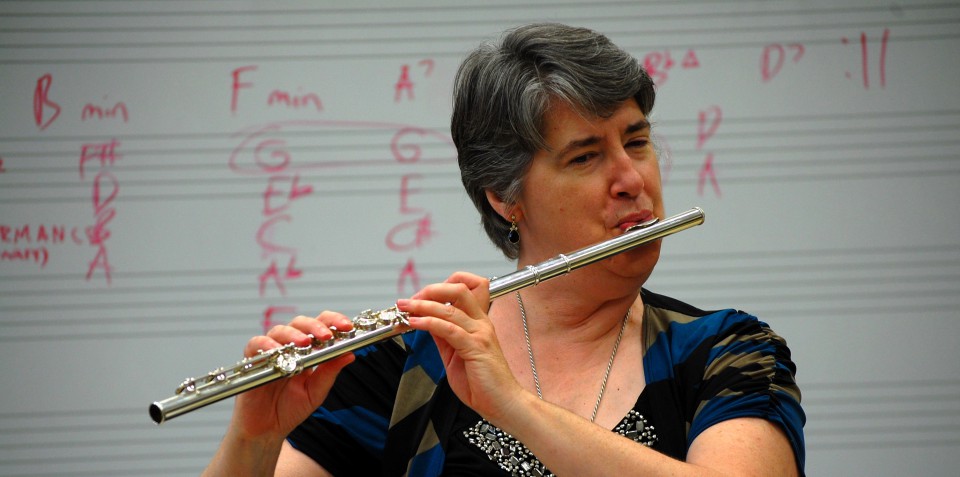Good breath control is an important issue for any wind instrument, but can be especially problematic for flute players because we don’t have a mouthpiece like the other winds and brass. As I tell my own students, everyone else has a mouthpiece and we have a hole. It is no wonder that breath control becomes such an issue for flute students, especially in the early stages.
A long time ago, a voice teacher pointed out to me that breathing to sing or play a wind instrument is different from regular breathing in one significant way. The relative speed of the breathing cycle is reversed. Here’s what this means. As you are sitting there reading this post, notice that you inhale relatively slowly and exhale quickly. When we sing or play a wind instrument, we need to inhale quickly and exhale much more slowly, and at a controlled rate. Teaching this to youngsters is a tricky thing. If you ask kids to take a deep breath, they will probably lift their shoulders and tense their necks. As you know, you have to relax through your trunk and allow everything to open up (ribs and abdomen) and allow the diaphragm to contract downwards. (N.B., you can’t make your diaphragm contract anymore than you can make your heart beat. The diaphragm has the same kind of nerve endings as your heart. It just does it’s job. It will work most efficiently in the breathing cycle if you focus on being relaxed and open through your chest and abdomen.)  To demonstrate to kids how to breathe naturally, I have them lie on the floor on their backs with their knees bent. Then I have them pay attention to how their abdomen rises and falls with their breath. Finally, I have them reverse the cycle by inhaling quickly and exhaling slowly while still lying on the floor. When we sit up again, they have a much better sense of how to take an easy, full breath.
To demonstrate to kids how to breathe naturally, I have them lie on the floor on their backs with their knees bent. Then I have them pay attention to how their abdomen rises and falls with their breath. Finally, I have them reverse the cycle by inhaling quickly and exhaling slowly while still lying on the floor. When we sit up again, they have a much better sense of how to take an easy, full breath.
In orchestra, I’ve always been envious of the ability of oboe players to spin a long line. They can seemingly sustain their blowing forever compared to what we can do as flute players. Why is this? It’s because they have the natural resistance of blowing into the tiny reed opening. We flute players need to create more resistance in order to have better breath control at every stage of our development. For beginners this means learning to shape a really small aperture with our lips, about the size of the opening of an oboe reed in fact. The aperture needs a fair amount of firmness to create the resistance necessary to spin the air column and sustain our blowing. As young players develop, they need to learn to pay attention to how efficient they are being with the air. Even if the aperture is the correct size and firmness, it is endemic to the flute that we frequently blow more air than is necessary. Provided the flutist is taking in enough air, the trick is to get more sound by using less air more efficiently.
If you find these entries useful, please subscribe, share with your colleagues and come back regularly for more flute tips. Feel free to comment. If you have a topic you would like to see explored more fully, you can contact me via IM/Messenger on Facebook or email me at dr_cate@sbcglobal.net. For information about clinics and workshops click here.
